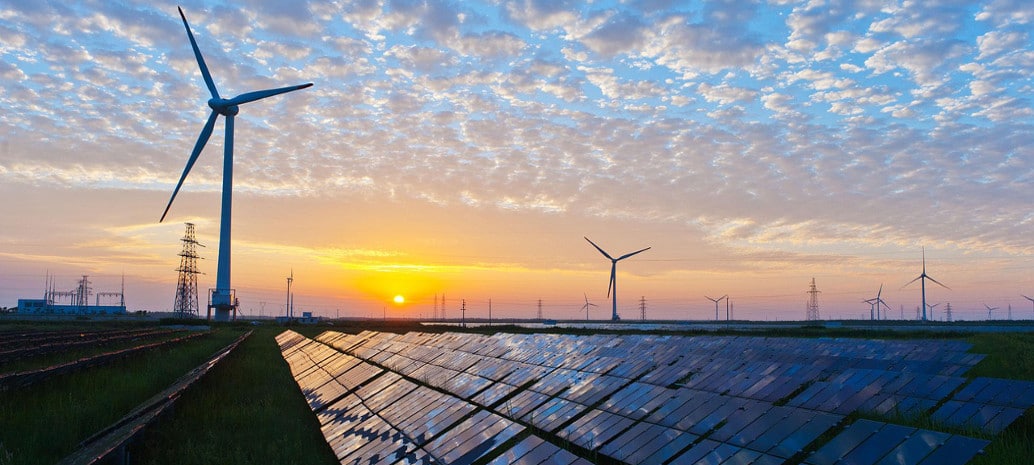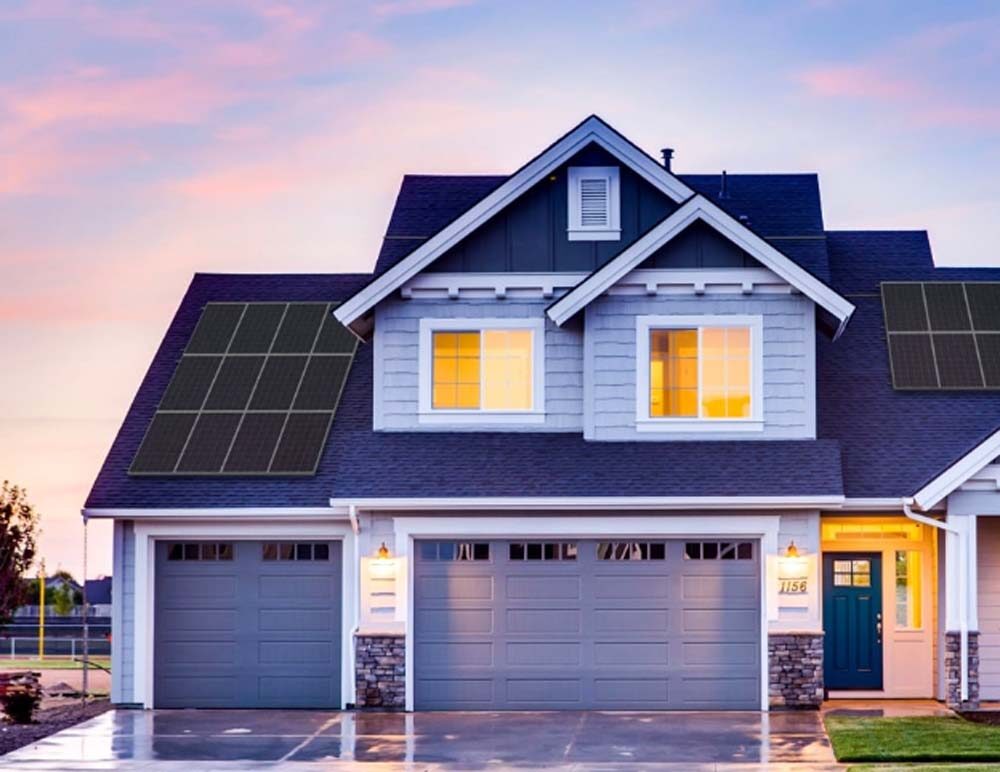In its 2018 New Energy Outlook, Bloomberg New Energy Finance (BNEF) sees skyrocketing growth in the global solar and wind energy markets up to 2050.
Overall, it anticipates that solar and wind will account for nearly half of global electricity generation by this date, driven by “precipitous“ cost reductions – leading to levelized costs of electricity (LCOE) falling 71% by 2050, following a 77% decrease between 2009 and 2018, says BNEF – and “cheaper and cheaper” batteries.
At the end of March, BNEF calculated that solar’s LCOE in the first half of 2018 was $70/MWh (minus tracking systems).
A total of $11.5 trillion is also expected to be invested in new power generation capacity, globally, between 2018 and 2050, writes BNEF, with $8.4 trillion of that going to solar and wind; and $1.3 trillion to new gas capacity (nearly half of which will go to gas-fired power plants, rather than combined-cycle turbines).
Regional variations
While solar and wind will cover 50% of the global average electricity generation by 2050, there will be regional variations, with Europe expected to boast an impressive renewables penetration of 87%, the United States 55%, China 62% and India 75%.
Australia is further said to have a remarkable penetration of decentralized systems, with rooftop PV and home batteries expected to account for 43% of all capacity in the country by mid-century.
Cheap batteries
The main emphasis in BNEF’s report is on batteries. Since 2010, it calculates that prices for lithium-ion storage have dropped by 80% per MWh. Due to accelerating electric vehicle (EV) manufacturing during the 2020s, these are expected to decline further. Expanding, Logan Goldie-Scott, Head of Energy Storage at BNEF told pv magazine, “We expect battery pack prices to fall to $96/kWh by 2025 and $70/kWh by 2030.”
He added, “For battery cell manufacturing for EVs – we expect the leading countries based on today’s plant pipeline to be China, the U.S., Korea and Japan. We expect further capacity in Europe to be announced over the coming years as well. Much of the activity in Europe has so far been in Eastern Europe.”
At the end of May, BNEF forecast that EVs will make up 44% of all new vehicle sales in Europe by 2030, 41% in China, 34% in the U.S. and 17% in Japan. India trails with a forecast of just 7% forecast. Buses meanwhile, are set to go electric at great pace and on a global scale.
“The arrival of cheap battery storage will mean that it becomes increasingly possible to finesse the delivery of electricity from wind and solar so that these technologies can help meet demand even when the wind isn’t blowing, and the sun isn’t shining,” writes Seb Henbest head of Europe, Middle East, and Africa for BNEF and lead author of NEO 2018. “The result will be renewables eating up more and more of the existing market for coal, gas and nuclear,” he adds.
Overall, Henbest forecasts that $548 billion will be invested in the battery market by 2050, of which two-thirds will be at the grid level and the rest in behind-the-meter, by households and businesses. Goldie-Scott adds that total annual investment in stationary energy storage in 2017 was around $2 billion.
In February, BNEF reported that in many countries, storage technology is still reliant on subsidyand often-erratic government support. The average price of a battery pack remains prohibitively expensive for many would-be distributed generation consumers, despite costs falling by 24% to $209/kWh last year.
This brings storage technology costs closer in line with other grid resources, the BNEF report said at the time, but adoption rates at scale continue to suffer from disjointed strategies to support and integrate such technology more effectively.
Overall, it found that a record 1.17 GW of new grid-scale storage capacity was installed in 2017.
Biggest loser
In its latest report, BNEF further forecasts that as solar and wind shares rise, coal will become less relevant, with its global share of the electricity market expected to shrink from 38% to 11%.
Elena Giannakopoulou, head of energy economics at BNEF, comments, “Coal emerges as the biggest loser in the long run. Beaten on cost by wind and PV for bulk electricity generation, and batteries and gas for flexibility, the future electricity system will reorganize around cheap renewables – coal gets squeezed out.”
Despite this, the use of gas-fired power plants is set to grow by 15% by 2050, although its share of global electricity is expected to decline from 21% to 15%.
It further predicts that going forward, gas-fired power stations will be relied upon to provide back-up for renewables, with the latter becoming chiefly responsible for base load.
To this end, at the end of March, yet another BNEF report stated that renewables and batteries are posing three distinct threats to the fossil fuel sector, specifically in terms of offering bulk generation, supplying dispatchable generation, and providing grid and energy flexibility – all previously the preserve of fossil fuels, such as coal and gas.
Still failing
Even though the latest NEO report produces a more negative outlook for coal, compared to last year’s report, and thus projects slightly improved emission trajectories – global carbon emissions from the electricity sector are projected to rise 2% from 2017 to a peak in 2027, and then fall by 38% to 2050 – it also makes it clear that the continued use of gas-peaker plants is ensuring that the electricity sector will continue to fail in helping to keep global CO₂ levels below 450 parts per million – the level considered by the Intergovernmental Panel on Climate Change to be consistent with limiting the rise in temperatures to less than two degrees Celsius.
“Even if we decommissioned all the world’s coal plants by 2035, the power sector would still be tracking above a climate-safe trajectory, burning too much unabated gas. Getting to two degrees requires a zero-carbon solution to the seasonal extremes, one that doesn’t involve unabated gas,” states Matthias Kimmel, energy economics analyst at BNEF.
This content is protected by copyright and may not be reused. If you want to cooperate with us and would like to reuse some of our content, please contact: editors@pv-magazine.com.









By submitting this form you agree to pv magazine using your data for the purposes of publishing your comment.
Your personal data will only be disclosed or otherwise transmitted to third parties for the purposes of spam filtering or if this is necessary for technical maintenance of the website. Any other transfer to third parties will not take place unless this is justified on the basis of applicable data protection regulations or if pv magazine is legally obliged to do so.
You may revoke this consent at any time with effect for the future, in which case your personal data will be deleted immediately. Otherwise, your data will be deleted if pv magazine has processed your request or the purpose of data storage is fulfilled.
Further information on data privacy can be found in our Data Protection Policy.